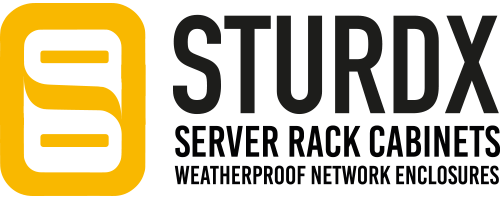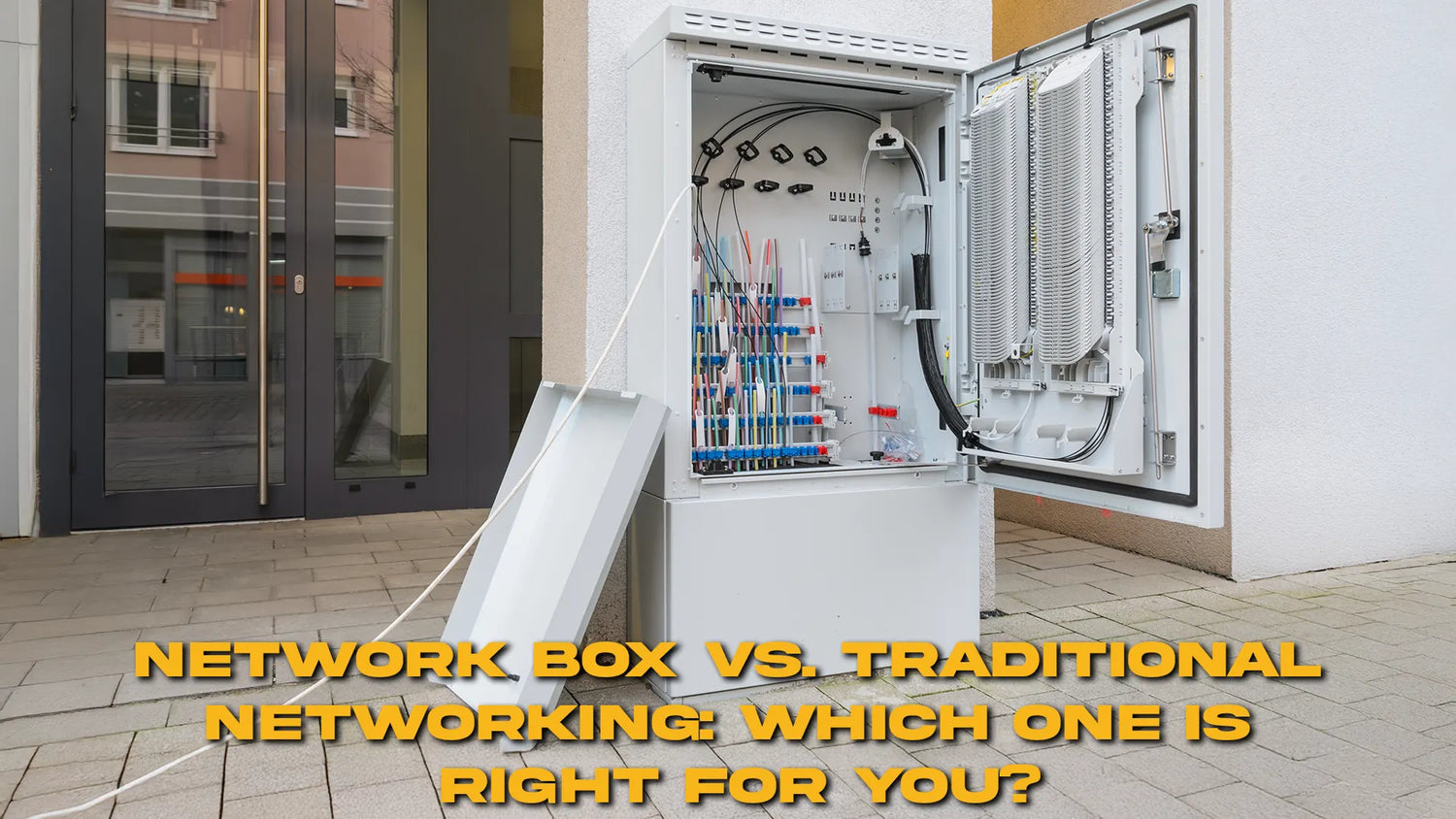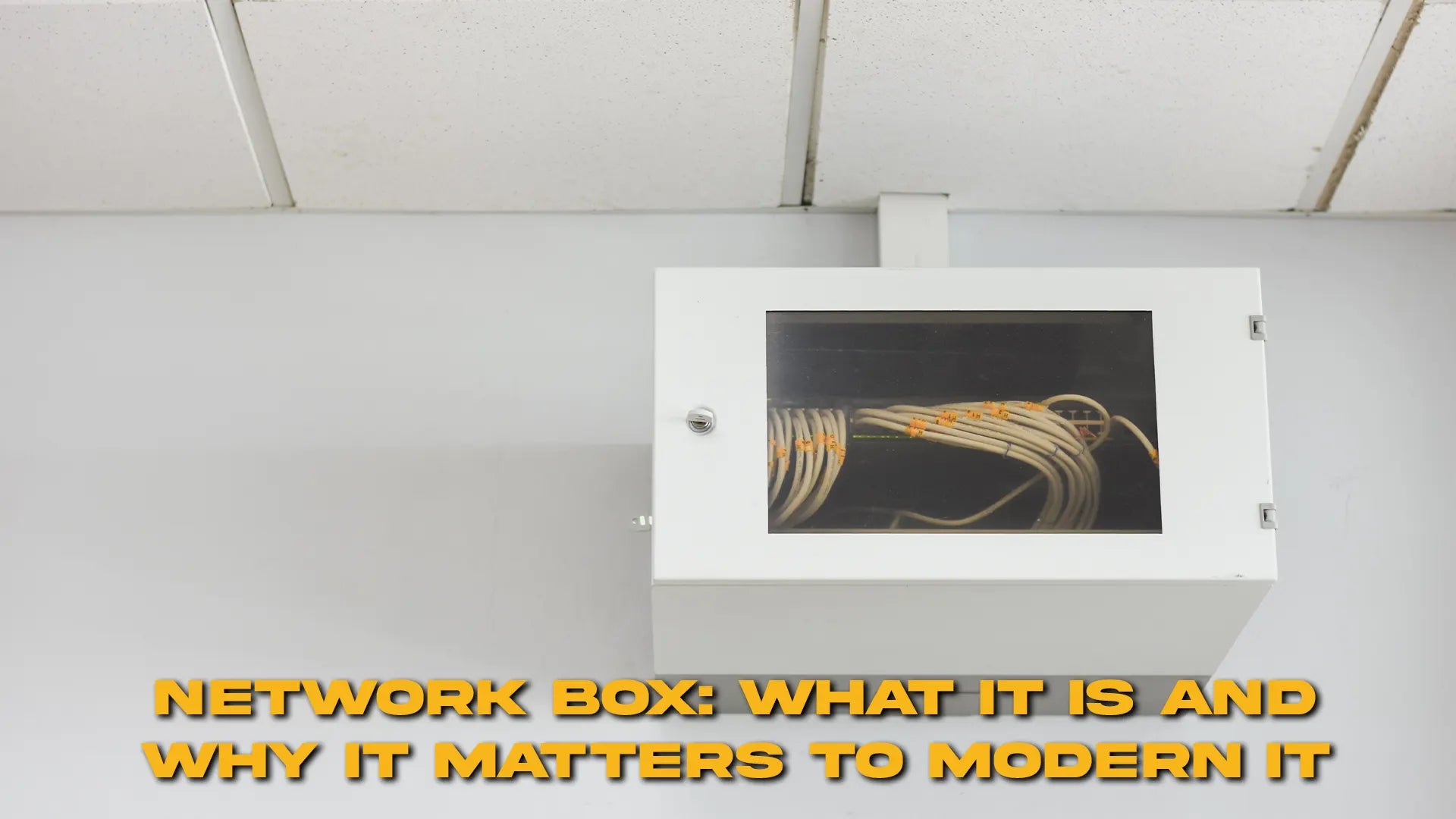When it comes to embarking on infrastructure management or optimization, we realize that the choice of tools and systems can really make a difference. The evolution of networking technologies has brought forth some innovative solutions like the network box that claim to be much simpler, faster, and cheaper to manage than traditional means of networking. Whether you are a netizen, the folks in charge of IT, or a businessman, it simply pays off to know the difference between network boxes and the traditional network setup while making a purchase.
The guide discusses the advantages and disadvantages of both; it also touches on topics such as network management solutions, open source network monitoring, and network inventory management. By the time you finish reading this, you will understand which type is best for your use and how to make a start on setting it up.
What is a Network Box?
A specialized hardware or software solution helps alleviate the difficulties in managing network resources. This solution usually consolidates various network management functions into one view so that an administrator can monitor, control, and optimize the network without any hindrance. Unlike traditional networking approaches that require multiple tools and manual configurations, this integrated and often automated approach eliminates unnecessary complications in maintaining a healthy network.

The great value of this solution lies in its multi functionality and ease of operation. It is typically capable of performing network inventory management, real time network performance management, and smoothly integrates with other components of the IT infrastructure. As a result, businesses can limit downtime, proactively identify network related disturbances, and grow without the hassle of stitching together incompatible tools. The importance of such solutions is increasing with greater dependency on digital operations, where ensuring connectivity and smooth performance without glitches is paramount.
Understanding Traditional Networking
Classical networking refers to the more traditional setup and maintenance of communication infrastructures of the type that one would expect with routers and switches, firewalls, etc. Practically, most of these configurations require some manual interfacing by network administrators who rely on disparate management platforms or standalone applications to cater to different needs such as viewing traffic and/or troubleshooting and inventory maintenance. There have been many years of dependence on this model for IT networks; however, it hampers and creates inefficiencies when confronted with growing organizations with complex working areas.
An important challenge with classical networking comes through a fragmented approach to network management. One application is used for traffic monitoring; another is used for security; with yet a third system, one manages inventories. This disjointedness causes slow reaction time in the events of network outages or lowered performances. And if there is no centralized management solution, it will prove increasingly difficult to maintain good documentation and consistent configurations throughout all devices to be configured; with that, do increase human error. All these factors have their way of stretching the thoughtful businesses toward more integrated solutions such as the network.
Key Differences Between Modern Integrated Networking and Traditional Networking
The primary distinction lies in integration and automation. Traditional networking is characterized by manual operation and multiple single purpose tools, whereas modern integrated networking consolidates these functions into a single unified platform. This optimization of operations enhances network wide visibility; hence, network administrators can now manage everything from one dashboard.

Another key difference concerns the flexibility and scalability each approach offers. Traditional networks, especially when relying on outdated hardware, often struggle to meet the demands of modern applications or growing businesses. In contrast, modern integrated solutions are typically designed to allow easy upgrading, integration with cloud services, and compatibility with third party applications. This flexibility results in reduced total ownership costs and faster deployment of new network features or expansions.
How Network Boxes Enhance Network Management Solutions
Contemporary network box systems feature sophisticated network management solutions that ease the act of monitoring, configuring, and troubleshooting. Usually, such solutions have an alert system that is triggered automatically in case of any sustained performance degradation or analytics dashboards that are graphic in nature. This way, the central control panel comes in handy and reduces manual intervention. The integration of these functionalities into one single device or software package has saved lots of precious time for IT teams as they no longer need to focus on ad hoc tasks but instead can give their energy to strategic projects.
Such platforms incorporate AI based insights and predictive analysis to catch possible network impairments or security loopholes ahead of any serious disruption. A network performance management approach that emphasizes being proactive is a complete game changer, especially in places where uptime and reliability matter. By giving an all encompassing view of network health and performance, network box solutions help IT teams in making well informed decisions that improve the efficiency of the whole system and user experience.
Network Setup Guide: Simplifying Deployment with Modern Solutions
One of the biggest advantages of using modern solutions is that they considerably simplify what is otherwise very complex and time consuming to set up. Traditional networking requires each device to be configured individually and to ensure that the devices are communicating properly. This is a task dreaded by anyone who is not very technically sound. In contrast, many network box products come with user-friendly interfaces and step-by-step network setup guides that help administrators get their networks up and running quickly.

The instructions usually provide templates for standard network architectures, device discovery that largely requires the administrator's confirmation, and pre configured security settings which limit human error. Such ease in deployment is a blessing for small and medium sized enterprises, especially concerning businesses that do not have a dedicated IT team. It lowers the complexity of the adoption of a newer technology in networking and ensures the configurations are consistent across the network. Even big enterprises enjoy quicker rollout times and easier management with network box based deployments.
Open Source Network Monitoring and the Network Box Advantage
Open source technologies have transformed the way networks are monitored and maintained. When open source network monitoring tools are paired with a centralized management solution, users gain the transparency and flexibility of open source software alongside the convenience of unified hardware or software administration. This hybrid approach offers the best of both worlds: powerful features without the high costs tied to proprietary software.
Open source tools empower IT teams to customize monitoring parameters, integrate new functionalities via community developed plugins, and leverage a vast pool of shared knowledge. When combined with a centralized system, these tools become easier to deploy and manage, simplifying what is often a fragmented experience in traditional networking setups. This provides organizations with deeper insights into traffic patterns, device health, and potential security threats—all within an integrated platform that facilitates proactive maintenance and troubleshooting.
Streamlining Network Inventory Management
Effective network management requires an accurate, comprehensive, and up to date inventory of all network equipment. Traditionally, this has been done mostly through manual tracking or, if automated, through several isolated databases, all of which make records become either outdated or incomplete. Network boxes greatly streamline network inventory by automatically detecting devices in the network, logging their configurations, and monitoring changes that occur over time.
This powerful automation benefits an IT team by relieving it of a lot of tedious administration and cutting down errors caused by information that turns late for use. Now well ordered central inventory promotes security policy and regulatory requirements because the administrator can see, at any time, what is connected and how it is configured. Overall, with the inventory management capacity incorporated, a network box ensures that networks are kept well organized, secure, and more straightforward to troubleshoot.
Network Performance Management: Boosting Efficiency and Reliability
Performance is the core of the network. It must be continuously monitored and adjusted so that throughput is optimal, latency is minimal, and availability is high. Traditional networking setups usually use manual checks or perhaps multiple disjointed tools in managing network performance, all of which would delay the detection and resolution of any issues.
On the contrary, a network box offers a complete, real time insight into network performance metrics, such as bandwidth utilization, packet loss, and error rates. In many cases, solutions have automated remediation capabilities or can integrate with IT service management platforms to allow fast responses to incident situations. Such comprehensive approaches serve to improve user experience while also enhancing the longevity of network hardware by averaging overloads and breakdowns. For companies hoping to maximize uptime and productivity, a network box with finely tuned performance management capabilities is a worthy investment.
IT Network Solutions: Choosing the Right Fit for Your Organization
The choice between a modern integrated network solution and traditional networking largely depends on your organization’s size, complexity, and IT setup. Small businesses might favor the simpler, more integrated options due to lower entry costs. A quick setup and go approach allows them to track and maintain their networks with very little technical know how and without a large IT team.
On the surface, traditional networking can still handle the highest computing demands, but in many cases, modern solutions complement existing infrastructure for purposes such as connecting branch offices or performing remote monitoring. This hybrid approach effectively manages those needs while providing the option to scale upward alongside critical functions that remain under control. When evaluating your business needs against the features of modern integrated network solutions versus traditional networking, this helps guide you toward the best IT network solutions.
Which One Should You Choose?
Deciding between an integrated system and traditional networking requires careful consideration of actual and estimated network needs. These integrated systems are often automated to assist with management, improve performance, and reduce operational costs. In organizations that use more sophisticated network management solutions, prioritize ease of setup, and employ open source network monitoring tools, such solutions can be very appealing.
However, traditional networks still hold value in scenarios that demand custom configurations and specialized hardware. For companies aiming to stay agile, scalable, and efficient, investing in such an integrated system might not be the best long term strategy. Assess your organizational goals and IT resources based on network complexity before making a decision.




Leave a comment
This site is protected by hCaptcha and the hCaptcha Privacy Policy and Terms of Service apply.